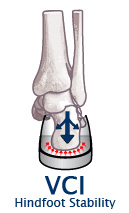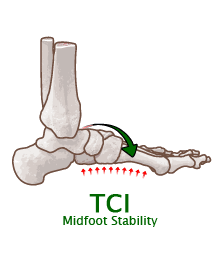Brooks Addiction 9 Men’s
Brooks Addiction 9 Men’s (Men's)

- Weight: 12.8 oz.
- Sizes: 7-13, 14, 15, 15
- Widths: B, D, 2E, 4E
Midfoot Stability
- MIN
- MOD
- MAX
Hindfoot Stability
- MIN
- MOD
- MAX
- SOFT
- MED
- FIRM
Energy Return
- LOW
- MED
- HIGH
Data Summary
- 1
- 2
- 3
- 4
High Stability/Motion Control
Recommendations
- Moderate to severe pronation
- Flat feet
Shoe Definitions

What is SSI?
Shoe Stability Index (SSI) is an indicator of shoe stability, as an index. SSI is derived through mathematically combining the quantified measurements of midfoot stability (TCI) and hindfoot stability (VCI), indicating the shoe’s overall ability to control the motion of the foot.

What is TCI?
Torsion Control Index (TCI) is a measurement of midfoot shoe stability, in inch-pound units (in.-lbs.). TCI is measured through actively twisting a shoe around the longitudinal axis of the shoe, from the heel to the area of the toes joints, simulating rotational forces of the foot, and measuring the shoe’s resistance to this motion.
The higher the TCI, the firmer the midfoot and more torsional stability. The lower the TCI, the softer the midfoot and less torsional stability.

What is VCI?
Vertical Compression Index (VCI) is a measurement of hindfoot shoe stability, in millimeters (mm). VCI is measured through compression of the heel portion of the shoe under a fixed amount of pressure, thereby measuring how the structure of the shoe controls rearfoot motion.
The higher the VCI, the softer the midsole and less hindfoot stability. The lower the VCI, the firmer the midsole and more hindfoot stability.

What is Loaded Heel to Toe Drop?
Loaded Heel to Toe Drop is the measurement in millimeters of the height of the heel relative to the fore foot when compressed to a fixed poundage. This can be defined as vertical support.
What is RI?
Rebound Index (RI) is an indicator of energy return of shoe to the foot, in millimeters (mm). RI is measured through compression of the heel portion of the shoe under a fixed amount of pressure, and then determining how much force the shoe exerts on the foot.


